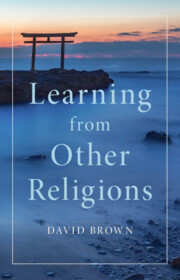
St Andrew’s Anglican church, Tangier
Can religions change? Historically, the evidence is overwhelming that they do. But for believers standing against this has long been the notion of revelation as the eternal, unchanging word of God. Even as late as 1893 Pope Leo XIII described the entirety of the Christian scriptures as ‘dictated by the Holy Spirit.’ Similar was the frame of mind with which most missionaries took the gospel to the further reaches of the British empire. Yet already in the nineteenth century attitudes were beginning to change, partly through closer encounter with those of others faiths and partly because historical studies demonstrated the cultural conditioning of all forms of belief. While for a few this suggested all religions equally distant from the divine (pluralism), most Christian theologians yielded to the notion of truth elsewhere only to the extent that other faiths might be seen as partial realisations of the full truth to be found in their own religion (inclusivism). But not only is such an attitude patronising, it fails to accept the implications of how the conditioning of thought actually works, in building upon existing assumptions and conventions. The consequence is that direct comparisons are necessarily flawed. Instead, any religious belief needs to be set in the context of its past history as part of a developing tradition that may or may not be moving in the same direction as Christianity.
While in the face of such relativities some theologians have been tempted to jettison any notion of revelation, the implied gradualism can also be viewed as offering an enriched account of divine activity. Instead of a dictation that overwhelms, the divine is now seen to work at the community’s own pace, respecting their struggles to understand by allowing challenges for change to emerge at appropriate moments not only from within the tradition but also from outside. Sadly, almost invariably missionaries assumed that even the churches they built should be in the style favoured at home (usually Gothic), as though that style were itself part of the essence of the faith. Currently, Saudi Arabia can be seen to act no differently, in requiring new mosques which it has financed to be built with their own characteristic minarets, even where the practice has hitherto been unknown (as in Morocco where towers are preferred). But alternative possibilities do exist, as can be seen in St Andrew’s church Tangier, where the chancel was deliberately modelled on the inside of a mosque, including Arabic quotations.
Clearly, then, there is need for a deeper level of engagement. As a worked example in the introductory chapter of my new book Learning from Other Religions I explore how biblical thought developed both through internal critique and in accepting elements from the surrounding pagan religions. Thereafter, I turn my focus to the other major world religions. In each case I seek to offer a sympathetic account of their own internal developments before turning to where Christian thought might profitably learn from one or more specific feature which appears more developed in that particular religion than it is within Christianity. Issues of gender and a more active role for art are considered from Hinduism, attitudes to aspects of suffering in Buddhism, rituals of respect in Confucianism, the immanence of the divine in Shintoism, and much else. As post-Christian in its origins, Islam might seem an especially difficult case to consider. But in contrast to the rigidity of the fundamentalism with which it is now most commonly associated, it has actually developed (both in the distant past and today) a rich variety of ways of exploring (and defending) change.
To such an account it will no doubt be objected that some of the differences between the religions are just too fundamental to be accommodated in this way. Examples would include whether the perceptual world is objectively real or mere appearance, as in Hinduism; whether human identity is fundamental or merely a loose combination of various aggregates, as in Buddhism; or again whether transcendental reality should be seen as personal or not, as in Jainism and Sikhism. Of course, such huge issues can scarcely be dealt with comprehensively in a short book. But what can be indicated is that Christianity is not quite as uniform on these three topics as is often supposed. This is not to claim the possibility of eventual agreement but it is to insist that notions of irreconcilable opposition are exaggerated. Similarly, reincarnation and nirvana lose some of their sharpest edges of disagreement with the Christian alternatives when set within a wider, common desire for the realisation of a transcendent justice.
Undoubtedly, some of what I attempt to justify will prove misguided. My primary point, though, will remain. So far from undermining religious belief, the idea of revelation working within culturally conditioned traditions can free us into a new respect for one another, as we observe the divine, however understood, no less powerfully at work in the traditions of our ‘near-neighbours’ as in the experiences of our own faith.

Learning from Other
Religions by David Brown
Latest Comments
Have your say!